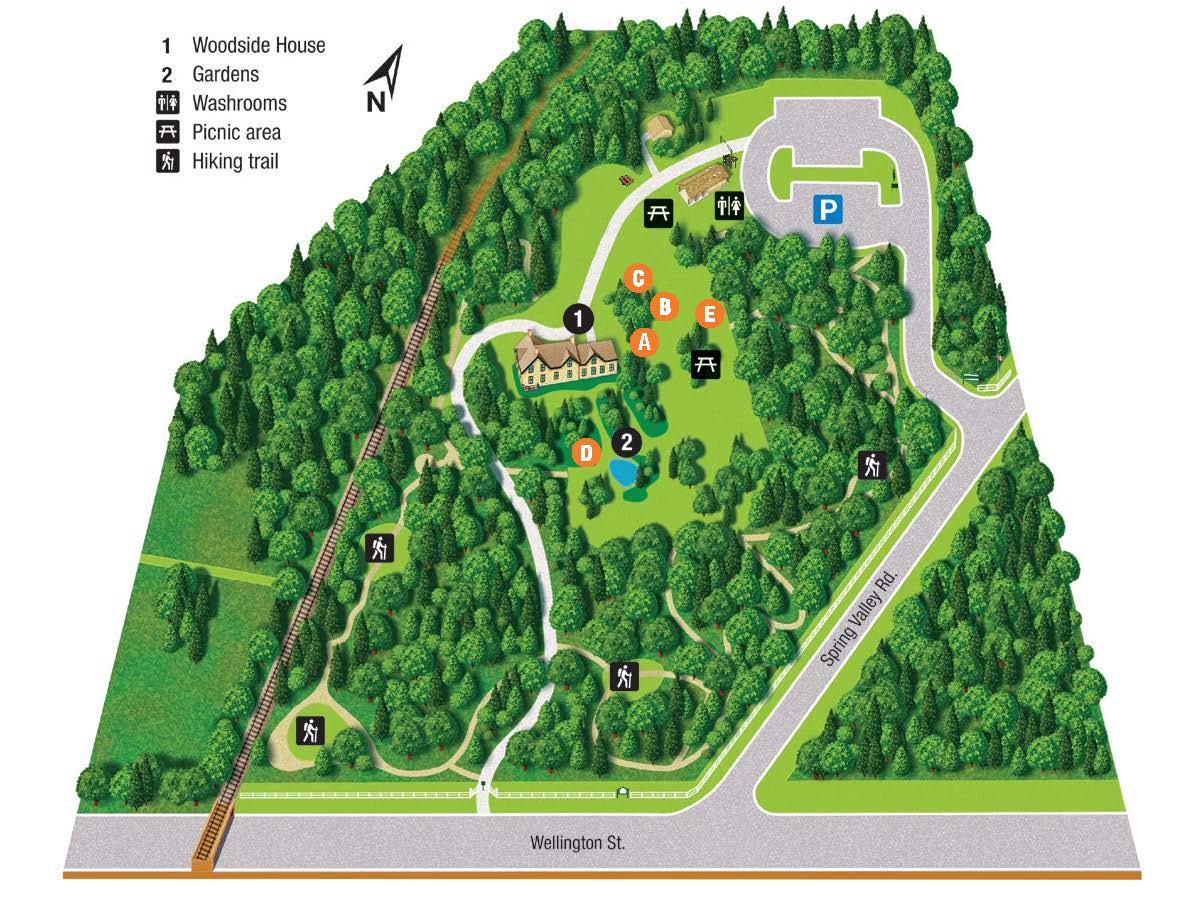Explore the grounds
Woodside National Historic Site
Woodside consists of 11.5 acres (4.5 ha.) of trees, hills, lawns and wetlands. Letters on the map show elements of the historic landscape. Find these spots, solve riddles, and answer questions to learn more about the environment in which the King family lived.

Spot A
On this spot there was a small “house” where all the Kings once sat. They came on their own, one at a time, since they never came here to chat. This was the spot, a long time ago, where they threw garbage away, since trash was buried or burned, not trucked to a dump like today.
What small building was on this spot?
Outhouse or Privy.
Spot B
You’re now by the well the Kings used to have - far from the garbage and waste. If the spots were too close, the trash from the pit could spoil the well water’s taste.
How many large steps is it from Station #1 to this spot?
Answers will vary with the size of the steps, but what is important to note is that the Privy and the well are a reasonable distance from each other.
Spot C
The Kings had a horse, they called him Old Bill, and he slept in a barn around here. Day after day, eating oats and hay, he’d make tons of manure every year.
What would the Kings have done with Old Bill’s manure?
Use it as fertilizer
Spot D
The very tulip tree in front of you was planted by John King. At the time this tree was planted, only about 15% of the original trees were left in Waterloo County.
What effects would cutting lots of trees have on the environment?
Erosion, flooding, the loss of habitats for birds and animals.
Spot E
Today we think wetlands, like the one in front of you, are important parts of the environment. Over a 100 years ago, people thought of wetlands in a different way.
What did people over a 100 years ago do with wetlands?
120 years ago, wetlands were not considered useful land. In fact, wetlands, especially swamps, were seen as places that caused disease. So that explains why people wanted to get rid of them.
- Date modified :